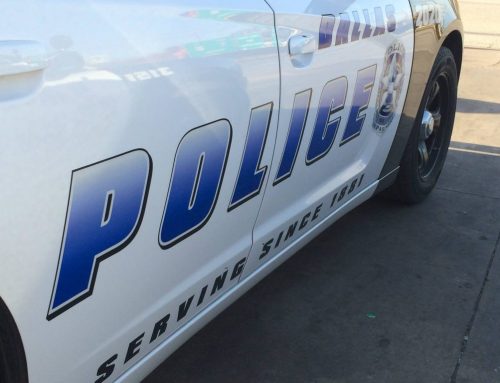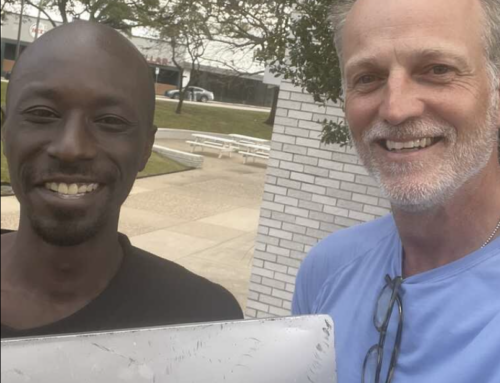Police Officers David Beideck and Victor Lozada were two of the first Interactive Community Policing officers on the force.
“We volunteered for it, hoping we can make a difference with this program,” says Lozada, who works out of the Central Operations Bureau.
“We feel we are making a difference.”
Beideck, Lozada and other ICP officers attend crime watch meetings and hand out their beeper numbers to citizens. They plan job fairs and neighborhood graffiti paint-outs. They monitor complaint reports, and if an area has a high number of calls, they try to identify and address the root cause of the problem, rather than simply wait for another call.
When patrol officers notice a problem in the community, they fill out a powder blue card describing the situation. The card is given to Lozada and Beideck, who research the problem and try to solve it by contacting other police officers, social service agencies or City departments.
It may seem like a practical approach to policing, but prior to the ICP program, many officers say they weren’t given the freedom to get out of their car, talk to citizens and take some time to solve problems.
“In the past, we were swamped with calls,” Lozada says. “That was your priority – answering calls. And in-between, deal with the drug dealers. We didn’t have time in-between.”
Through his ICP program, Dallas Police Chief Ben Click is trying to get the department back to the beat-officer philosophy.
“In the late ‘50s and early ‘60s, we went into an era where we thought we were professionalizing law enforcement,” Click says.
“We got away from the old Frederick Taylor days, when in the early 1900s, there was this beat cop who walked the streets, and knows everybody. But when you watch what that officer did, it didn’t look like he did much.”
“So what you had was a bunch of younger educated police commanders look at them and say: That is not very efficient. We can put that individual in a car and give him a radio.
“We didn’t know what we were leaving, because once we put that officer in a car, we lost contact with the community.”
Then 911 arrived.
Police departments across the nation promised they would answer any 911 call. And they do. Rather than talking to community residents and solving the problems that lead to crime, police officers today spend their shifts cruising from one call to another.
“We really missed the whole point back in the old days – the purpose of that officer in the neighborhood, the mediator,” Click says.
The biggest hurdle facing the ICP program is decreasing the number of 911 calls, Click says. The department can’t stop answering them, but at the same time, officers need to be given time to work in the community.
As more and more simple problems are solved prior to turning into emergency calls, the number of 911 calls should decrease, Click says. If this happens, patrol officers will have even more time to solve problems, rather than relying only upon the designated ICP officers.
“We are trying to get that officer back out of that car, going back into the neighborhood where you can develop the communication again and know everything that is going on in the neighborhood,” Click says.
It’s too soon to tell how the ICP program is affecting crime, but neighborhood resident J.J. Pair says she already can see a difference in Lake Highlands. One of the first projects the ICP officers at the Northeast Operations Bureau addressed was an apartment complex that homeowners were complaining about.
The ICP officers tracked down the out-of-town landlord and started flooding the property with citations. The officers parked a police mobile unit on the property. Pretty soon, problems at the complex slowed down, Pair says.
“The ICP officers can stop a situation before it becomes a problem,” Pair says.
“This is the person who can be there and be on top of the information without having to run off and answer a call.”
“It’s return of the beat officer. That’s what it feels like.”




